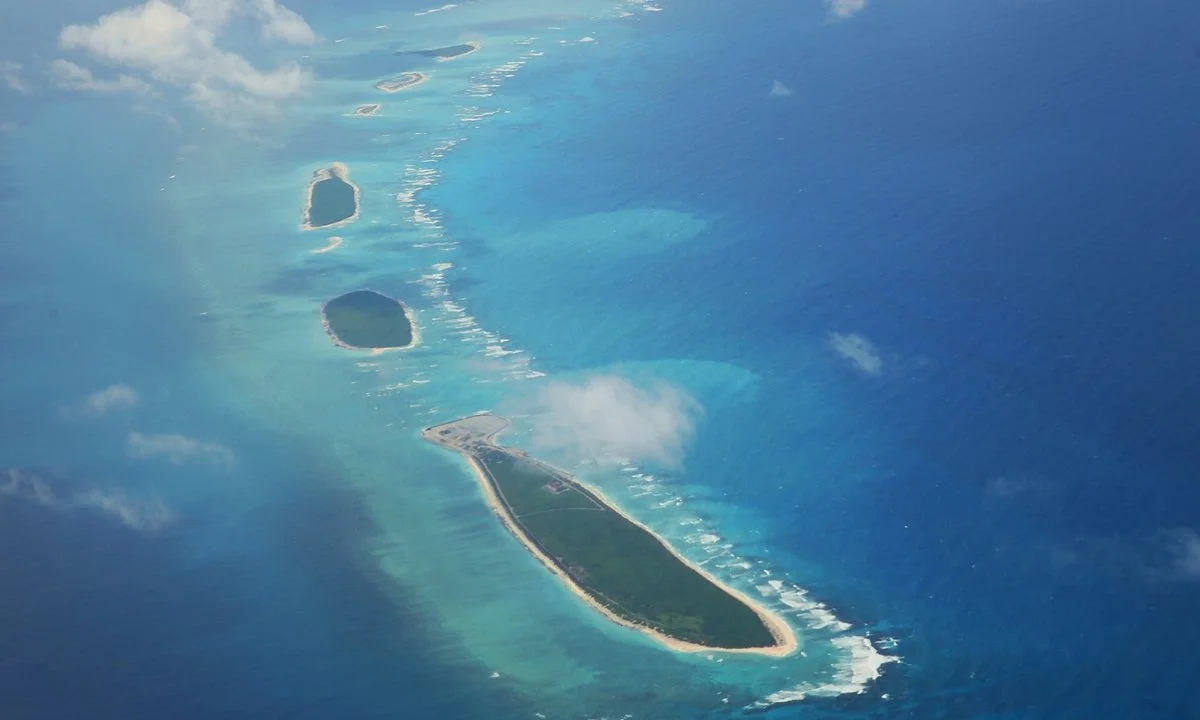All told, by looking at the development of the Three Warfares concept and its implementation in the context of disputes in the South China Sea, it becomes clear that China does not merely conduct political warfare in pursuit of various individual geostrategic objectives. Rather, it is fundamentally integrated within China’s broader maritime strategy, which, in turn, translates into China’s grand strategy of national rejuvenation. This deduction is further underpinned by China’s long strategic legacy, which firmly resembles Kennan’s definition of political warfare. Chinese political warfare should, therefore, not be considered separate from the larger strategic context because China’s conception of national strategy incorporates all levers of comprehensive national power, as defined by Xi Jinping himself, leading to the symbolic characterization of Chinese political warfare as a strategic tautology, as political warfare seems fundamentally inherent within Chinese strategic thinking.
Operationalizing Strategic Empathy: Best Practices from Inside the First Island Chain
To operationalize the concept of strategic empathy, this article argues that strategic leaders must appreciate three critical factors: geography, history, and domestic politics. These three factors are the pillars of the framework employed by U.S. Army Japan, a theater-strategic headquarters in the Indo-Pacific theater.
SEA-Merica 2040: Leveraging Climate Change to Win Friends and Influence the South China Sea
China’s excessive maritime claims in the SCS destabilize and undermine the balance of power in Southeast Asia. The best way to achieve a free and open SCS is a peaceful strategy that nests the common needs of the SCS Five within U.S. security interests and capabilities, all without requiring modification of Chinese behavior for success. SEA-Merica 2040 does the job.
Mind the Gap: How the U.S. Coast Guard Can Navigate the Window of Vulnerability in the Indo-Pacific
When the U.S. Coast Guard’s unique capabilities, authorities, and less threatening white hulls are considered in totality, novel solutions that mesh with the service’s strengths emerge. Cooperation on mutually beneficial Coast Guard missions serves as an opportunity to develop confidence-building measures and knit a resilient architecture that will inoculate two superpowers from conflict.
#Reviewing Red Star Over the Pacific
China seeks nothing less than to displace the United States as the preeminent power in the Pacific, if not the world. It intends to make a new order that expands the reach of its state-driven economic model. To achieve this vision, China's leaders have characterized the first two decades of the 21st century as a "period of strategic opportunity," during which Xi Jinping's “Chinese Dream” of national rejuvenation can be realized.
Southeast Asia is Pivotal, and U.S. Strategy Should Aim to Keep it That Way
Information Operations Countermeasures to Anti-Access/Area Denial
The good news about China’s anti-access/area denial actions in the South China Sea and beyond may be that in apparently selecting a hybrid strategy, China has chosen to operate in the Phase 0/Gray Zone/Shaping area, thus avoiding activity that generates an overt military response. That said, the strategy involves brinksmanship, so proper use of information operations is critical to communicate intentions and avoid miscommunications leading to miscalculations and overt military conflict. Information operations can also cloud Chinese calculations to make preemptive strikes less appealing and more fraught with risk.
The Imperative of Chinese History and Geography
#Reviewing Fire on the Water & Meeting China Halfway
Our analysis is built on a foundation of sand. We offer bold proclamations and precise policy proposals designed to cajole, convince, or coerce a hostile nuclear power whose decision making process is utterly opaque to us. We theorize much, and assume more, but we still do not know why the Chinese do what they do. Most critically, we do not know how to find the knowledge we lack. This is an intellectual challenge we have not begun to meet. Understanding Zhongnanhai is a wonderful methodological puzzle—but a puzzle with nuclear stakes. Until we solve this puzzle, I doubt any number of policy prescriptions will be enough to ensure peace in the West Pacific.
China’s Dredging Strategy in the South China Sea
Chinese dredging operations add an interesting complication to the debate over sovereignty, control, and conflict in the South China Sea. The Spratly Islands are presently claimed by both China and the Philippines. Each party to the dispute makes claims that are intended to define the interpretation events. However, it is not always the case that these interpretations fit the facts. As part of their efforts to assert their claim to ongoing sovereignty in the area, China is engaging in significant dredging operations there. The Chinese are involved in dredging operations on five different reefs and has created some 2900 acres of land in the Spratlys. This behaviour sits within murky and sometimes undefined legal frameworks but often clashes with Beijing’s official reasoning for their behaviour.
The Emergence of India as a Space-Faring Nation: Implications on the Developing Conflict in the South China Sea
Growing concern over China’s burgeoning military might and seeming willingness to use it has caused many to re-evaluate U.S. Army doctrine and training. Counterinsurgency and asymmetric warfare have dominated Western military thought over the past decade of fighting. However, the escalating conflict in the South China Sea has many strategic thinkers considering how to fight a large-scale war once again. One nation often overlooked in the Pacific equation, though, is India and their emerging capabilities in space, and how those emerging capabilities may impact an armed conflict.












